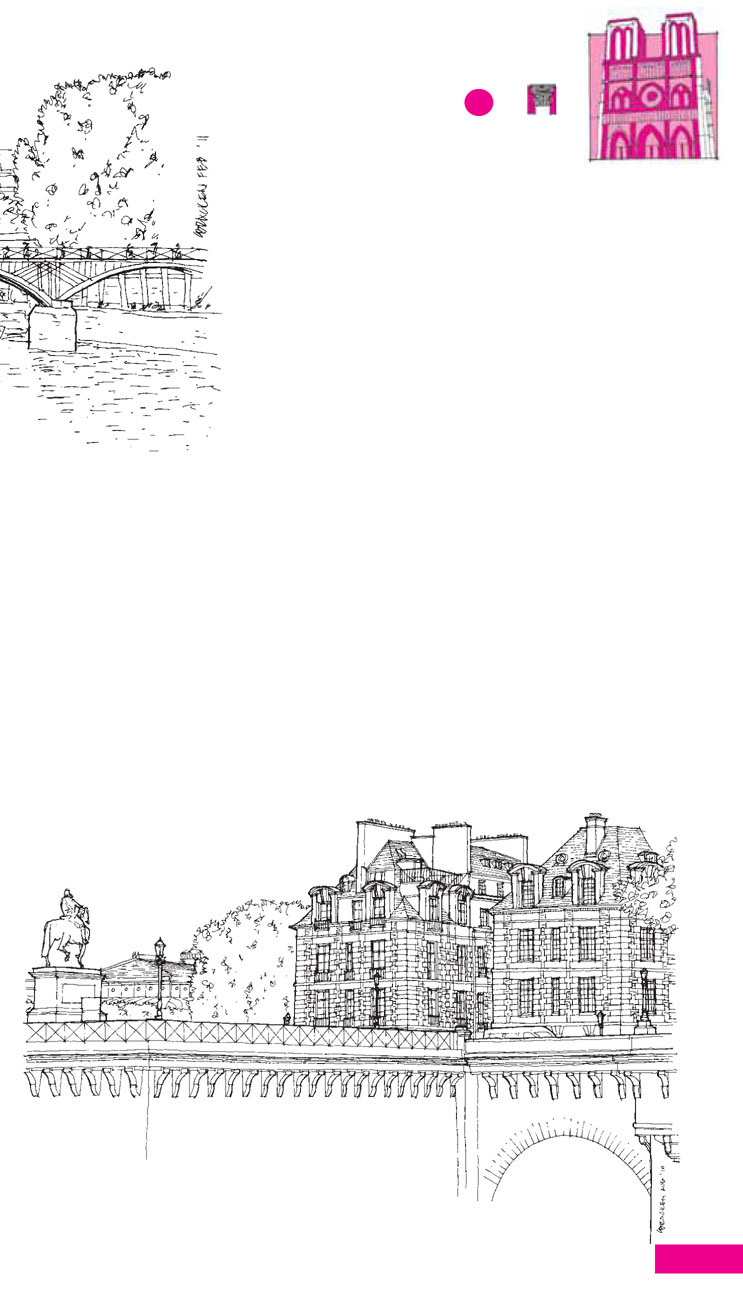2
Opposite the statue of Henri IV lies the entrance to Place Dauphine. This triangular-shaped square was laid out
just after the Pont Neuf opened, and Henri IV named it for his heir, the Dauphin (later Louis XIII). This was one of the earliest urban planning projects in the city. The site comprising of three riverine islets was little more than mud banks when Achille du Harlay began to lay out the thirty-two houses which were all designed in the same style. The narrow western wedge of the square is flanked by two pavilions facing the Seine. Like the Place des Vosges, these houses were built of brick with limestone detailing, and their steep slate roofs contain dormer windows. One of the few buildings to have avoided any restoration is No. 14.
The eastern end of the square was demolished to allow for an unimpeded view of the Palais de Justice. This monumental white marble building was built between 1857 and 1868 and forms the western end of a vast complex built over the former royal palace of St Louis. Stretching the entire width of the Ile de la Cité, this block has been occupied since Roman times. Charles V moved the royal court to the Marais in the 14th century, but the buildings here are still used for their original judicial and legislative functions. This was Paris’ parliament from the 16th century until the Revolution. Now it is home to the city’s Court of Appeal as well as the Cour de cassation, France’s highest legal jurisdiction.
Palais de Justice
Opening times: 9am–6.30pm, Mon–Fri
Tel: 01. 44 32 52 52
Pont Neuf
The Islands
19

